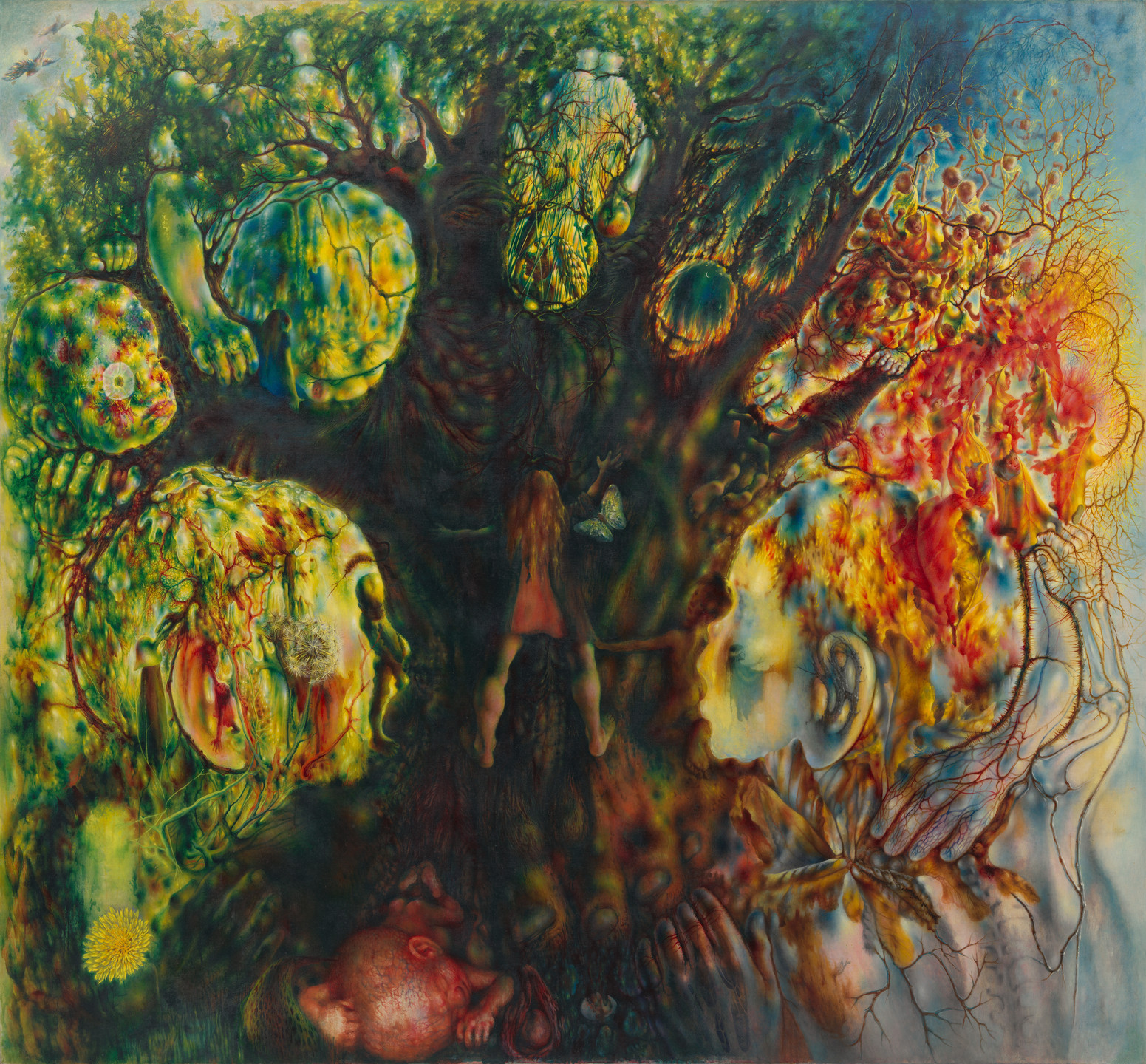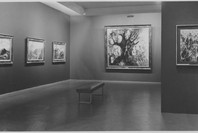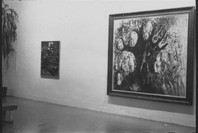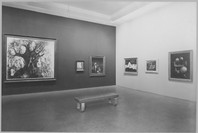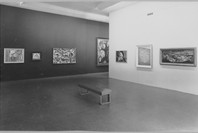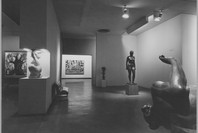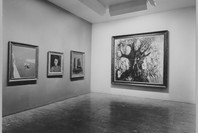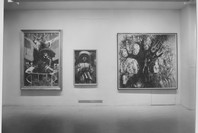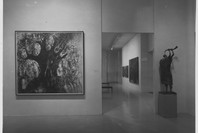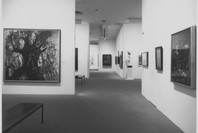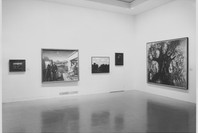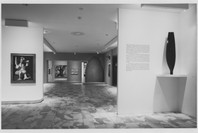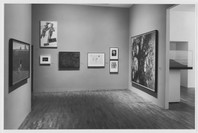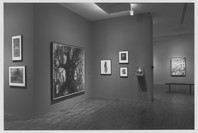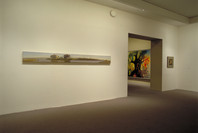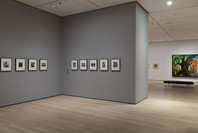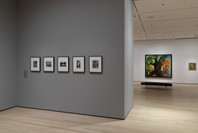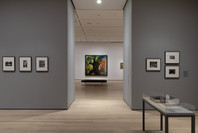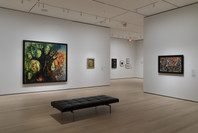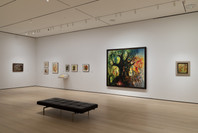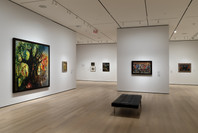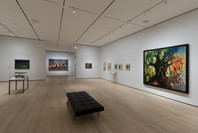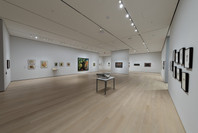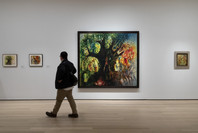By the time he turned twenty, Tchelitchew had been thrust into a lifetime of wandering. After fleeing Moscow for Kiev with his family in 1918, he spent a few years in Berlin honing his prowess as a stage designer, then a decade in Paris, where he developed paintings featuring multiple metamorphic images. The artist finally arrived in the United States in the autumn of 1934, at the age of thirty-six.
Although he began Hide-and-Seek while summering in Vermont in 1940, the painting is based on a tree the artist had sketched while traveling, six years earlier. At the time, Tchelitchew had made several drawings of the tree, with new elements emerging in each permutation: playful children arrived; branches and roots became fingers and toes. In the final canvas, embryonic figures encircle the trunk, their translucent bodies floating among traces of human and vegetal forms that pulse with a rhythmic multiplicity. The visceral, vibrating mass coalesces on the picture plane, enacting Tchelitchew’s theory of metamorphosis, in which separate moments and perspectives “exist as one, simultaneously, indivisibly and independently.” The painting’s luminous figures cycle between presence and absence, life and death, their movements paralleling the artist’s experience of forced flight and transformation. Hide-and-Seek, which took two years to complete, was ready just in time for the artist’s 1942 retrospective at The Museum of Modern Art.
Publication excerpt from MoMA Highlights: 375 Works from The Museum of Modern Art, New York (New York: The Museum of Modern Art, 2019)
